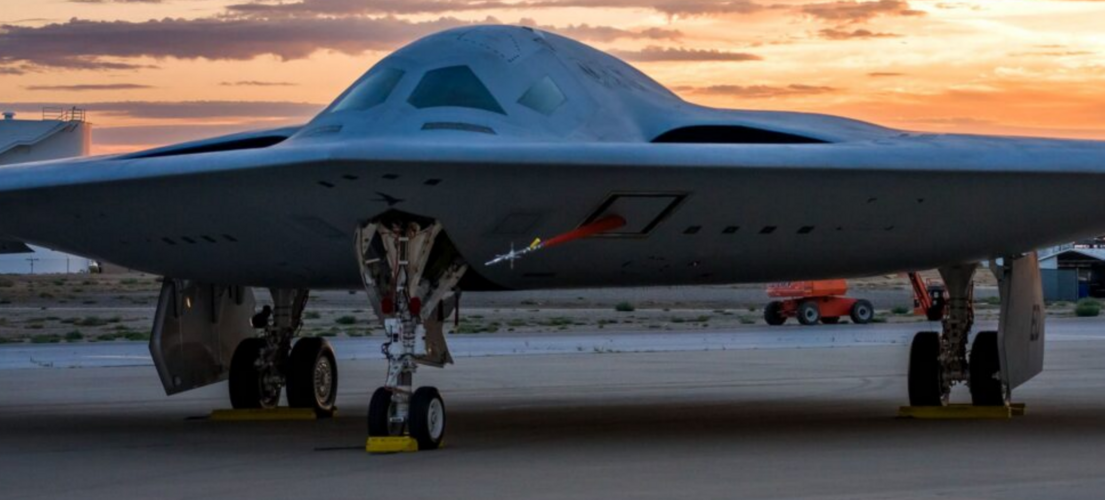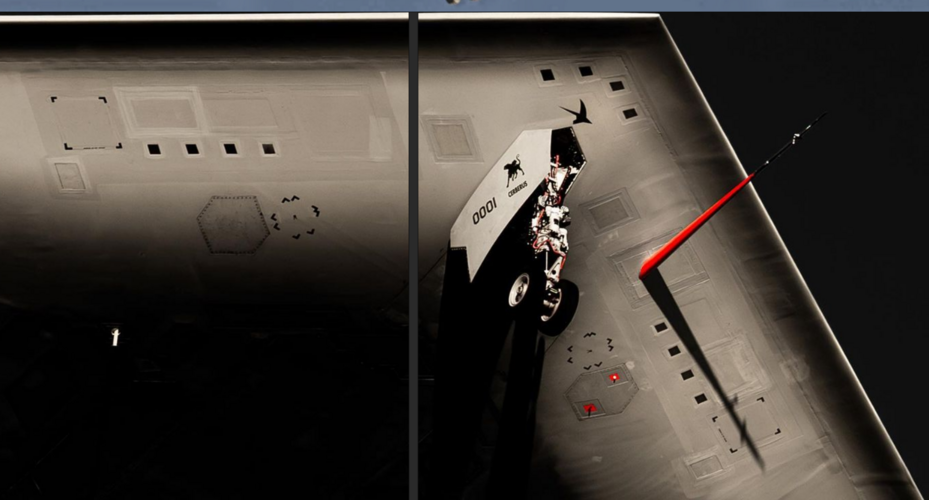- Joined
- 1 April 2006
- Messages
- 11,375
- Reaction score
- 10,208
Strain gauges?
Could be photoshopped or they may be wanting to paint the ports same color as the skin. Point of reference, the YF-23 used a flush air data system and the ports were part of the skin, so you had to look real close to see the ports holes and the main port was right at the tip of the nose. The pitot tubes on the the YF-23 were the reference devices for the flush system. A production F-23 would have been all flush ports.Lots of weirdness. The angle of the air data probe looks like it changed, and there might be a skin or film over that flush air data sensor array.
The image that Brian Everstine posted also shows panel lines around the air data probe fitting that aren't there in any of the airborne images I've seen. Usually taped or faired over for flight?
The image Brian Everstine posted was from the ground tests, likely before some prep work was done to get the plane 'flight test ready'.The image that Brian Everstine posted also shows panel lines around the air data probe fitting that aren't there in any of the airborne images I've seen. Usually taped or faired over for flight?


They are present on both photosInterestingly, the markings for the Jackspots were also removed for the flight testing...?
apologies, i meant on the in-flight photo.They are present on both photos
The B-2 has two AESA arrays. I don't see why not. (Don't expect them to be where they are on a fighter.)I was considering the volume of the B-21s nose and wondering if it was possible to put an AESA radar in there, but then remembered the RQ-180 lineage and thought it might utilize an array of AESA TMR modules buried within leading and key trailing surfaces vs a more conventional setup? Sorry for the ignorant question.

Low Probability of Intercept (LPI) radars are so commonplace now that it'd be malpractice/treasonous if the B-21 didn't have them. I'd expect the Raider's AESAs to be a generation past the F-35's and be freakishly capable.So the B-21 will have two AESA radars reletively in the same position as the B-2. And will they be frequency jumping radars as well? I seem to remember reading somewhere at the time of the B-2 reveal that it had that capability.
So the B-21 will have two AESA radars reletively in the same position as the B-2. And will they be frequency jumping radars as well? I seem to remember reading somewhere at the time of the B-2 reveal that it had that capability.
It would seem silly not to put as much sensor and compute capability as possible on the B-21. If you’re gonna put an airframe like a Raider into a contested space you might as well soak up every EM detail one can, no?
Still needs to be able to see the sky, though. So there should be some topside aperture where it's visible.AINS will probably be buried somewhere where it is not visible.
Still needs to be able to see the sky, though. So there should be some topside aperture where it's visible.
One advantage of AINS over radar mapping is that it is completely passive.
No use in nuclear war = no need in AINS. Actually B-1A/B nav system story is much more complicated AFAIRB-1 does not use an AINS. The B-21 may or may not use one?
Not sure if I'd agree with you there. Not least because GPS is liable to be taken out by ASATs and such in the opening stages of any strategic exchange.No use in nuclear war = no need in AINS.
Not sure if I'd agree with you there.
